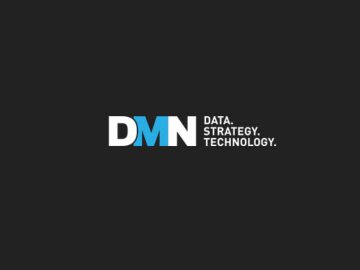
Generating high-quality leads is a critical component of any successful marketing strategy. Effective lead generation requires a multifaceted approach, combining various techniques to attract, engage, and convert potential customers. Here are some top lead-generating strategies, including SEO and link building, to help you create a robust lead generation system.
1. Search Engine Optimization (SEO)
What it is: SEO involves optimizing your website and content to rank higher on search engine results pages (SERPs) for relevant keywords. Higher rankings increase visibility and drive organic traffic to your site, which can convert into leads.
How to use it:
- Keyword Research: Identify keywords that your target audience uses to search for products or services similar to yours. Use tools like Google Keyword Planner, Ahrefs, or SEMrush to find relevant keywords with a good search volume and manageable competition.
- On-Page SEO: Optimize your website’s content, meta tags, headers, and images for your target keywords. Ensure that your site has a clear structure, fast load times, and is mobile-friendly.
- Content Creation: Develop high-quality, valuable content that addresses your audience’s needs and pain points. Use blog posts, articles, infographics, and videos to attract and engage visitors.
- Technical SEO: Ensure your website is free from technical issues that could hinder search engine crawling and indexing. This includes optimizing site speed, using SSL certificates, and fixing broken links.
2. Content Marketing
What it is: Content marketing involves creating and sharing valuable content to attract and engage a target audience, ultimately driving profitable customer action.
How to use it:
- Blogging: Regularly publish informative and engaging blog posts that address common questions or problems your audience faces. Incorporate keywords naturally to improve SEO.
- Ebooks and Whitepapers: Offer in-depth guides or reports in exchange for contact information. This is a great way to capture leads while providing value.
- Webinars and Podcasts: Host webinars or podcasts to share expertise and interact with your audience in real-time. These formats allow for deeper engagement and can be a rich source of leads.
3. Social Media Marketing
What it is: Social media marketing uses platforms like Facebook, LinkedIn, Twitter, and Instagram to promote your content, engage with your audience, and generate leads.
How to use it:
- Targeted Ads: Use social media ads to target specific demographics, interests, and behaviors. Platforms like Facebook and LinkedIn offer advanced targeting options to reach your ideal audience.
- Engagement: Regularly post content that encourages interaction, such as questions, polls, and contests. Respond promptly to comments and messages to build relationships with your followers.
- Influencer Collaborations: Partner with influencers in your industry to extend your reach and credibility. Influencers can promote your content to their audience, driving traffic and leads.
4. Email Marketing
What it is: Email marketing involves sending targeted emails to prospects and customers to nurture relationships and drive conversions.


How to use it:
- Email List Building: Use lead magnets (e.g., free trials, discounts, content upgrades) to encourage website visitors to subscribe to your email list.
- Segmentation: Segment your email list based on factors like demographics, past behavior, and purchase history. This allows you to send personalized and relevant content to each group.
- Automated Campaigns: Set up automated email sequences to nurture leads. For example, a welcome series for new subscribers, a follow-up series for webinar attendees, or a re-engagement series for inactive subscribers.
5. Pay-Per-Click (PPC) Advertising
What it is: PPC advertising involves placing ads on search engines and other platforms and paying a fee each time someone clicks on your ad.
How to use it:
- Google Ads: Create targeted ads for relevant keywords. Use ad extensions, such as sitelinks and callouts, to enhance your ads’ visibility and effectiveness.
- Retargeting: Use retargeting ads to re-engage visitors who have previously interacted with your site but did not convert. Retargeting can significantly increase conversion rates by keeping your brand top-of-mind.
- A/B Testing: Continuously test different ad copies, headlines, and landing pages to determine what works best and optimize your campaigns for better performance.
6. Referral Marketing
What it is: Referral marketing encourages existing customers to refer new customers to your business, often incentivized by rewards or discounts.
How to use it:
- Referral Programs: Create a structured referral program with clear incentives for both the referrer and the new customer. Promote the program through your website, email campaigns, and social media.
- Satisfied Customers: Encourage satisfied customers to leave reviews and share their positive experiences with others. This can be done through follow-up emails or during in-person interactions.
7. Link Building
What it is: Link building involves acquiring backlinks from other websites to your own, which can boost your SEO efforts and drive referral traffic.
How to use it:
- Guest Blogging: Write articles for reputable blogs in your industry, including a link back to your site. This not only provides backlinks but also positions you as an authority in your field.
- Resource Pages: Reach out to websites with resource pages relevant to your industry and request to be included. Provide a compelling reason why your content is a valuable addition.
- Broken Link Building: Find broken links on other websites and offer your content as a replacement. This helps the website owner fix a problem while gaining a backlink for you.
8. Networking and Partnerships
What it is: Building relationships with other businesses and professionals can lead to mutually beneficial partnerships and new lead opportunities.


How to use it:
- Industry Events: Attend industry conferences, trade shows, and networking events to meet potential partners and clients.
- Partnerships: Form partnerships with complementary businesses to cross-promote each other’s products or services. Joint webinars, co-authored content, and shared promotions can expand your reach.
9. Interactive Content
What it is: Interactive content, such as quizzes, surveys, and calculators, engages users and encourages them to provide their contact information.
How to use it:
- Quizzes and Surveys: Create quizzes and surveys that provide personalized results or insights. For example, a marketing assessment quiz that offers tailored advice based on responses.
- Calculators: Develop calculators that help users determine ROI, savings, or other valuable metrics related to your product or service.
10. Customer Reviews and Testimonials
What it is: Positive reviews and testimonials from satisfied customers can significantly influence potential leads and build trust.
How to use it:
- Review Platforms: Encourage customers to leave reviews on platforms like Google My Business, Yelp, and industry-specific review sites.
- Testimonials: Showcase customer testimonials prominently on your website and in marketing materials. Video testimonials can be particularly impactful.
Conclusion
Effective lead generation is a continuous process that requires a combination of strategies tailored to your business and audience. By implementing SEO and link building alongside content marketing, social media, email marketing, PPC, referral programs, networking, interactive content, and customer reviews, you can create a comprehensive lead generation system. Regularly analyze and adjust your strategies to ensure they remain effective and aligned with your goals.



![ChatGPT Sorting Google Search Console Keywords into Clusters [+ Free Prompts] ChatGPT Sorting Google Search Console Keywords into Clusters [+ Free Prompts]](https://virtual-coach.com/wp-content/uploads/2024/07/1720835414_image-360x270.png)
